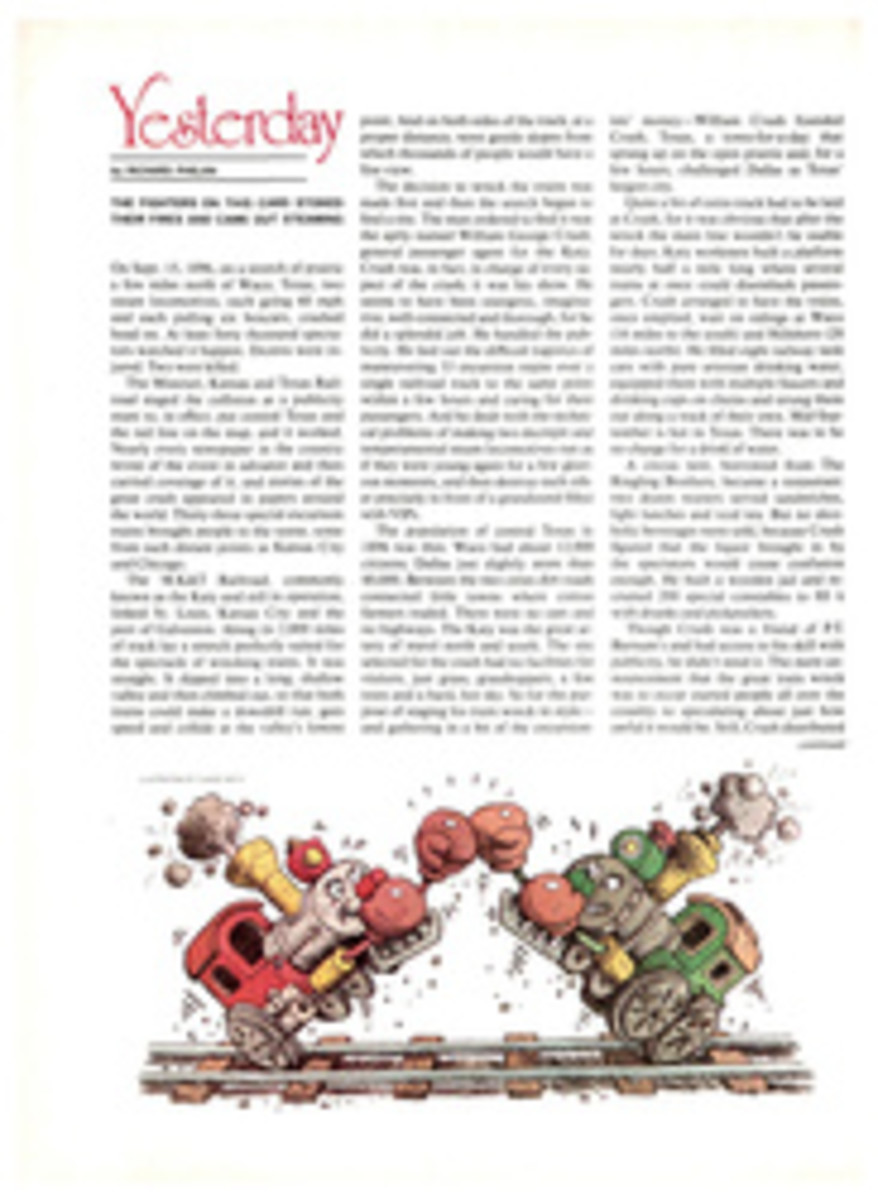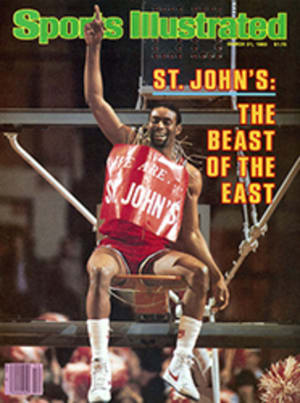
Great Scott! What a doubleheader
Last Friday morning, 12 hours or so after winning his third straight men's world figure skating title, Scott Hamilton sat down in a restaurant to a breakfast of a giant T-bone steak backed up by a mountain of French fries, a dish of asparagus spears, an order of fried rice, a tossed green salad and coffee. Plus a Coca-Cola on the rocks and a two-scoop sundae of vanilla ice cream doused with chocolate sauce and whipped cream and decorated with two cookies. Off to one side, a group of admirers stood in a semicircle watching quietly, respectful of the champion's need for a moment of privacy. "Y'know," said Hamilton, brandishing a chunk of steak in the air, "I wonder if I ought to throw in a couple of iron tablets, too. I weighed 110 pounds going into this meal."
Maybe so, but that's got to include his gold medal, his skates and all. Not that his weight makes an ounce of difference, because this wispy young man of 24 is one of the more remarkable athletes of our day. Last Thursday, by beating a field of 21 other skaters from 14 countries in Helsinki, Hamilton became the first American man to win three consecutive world titles since David Jenkins in 1957-59; he has now won 13 gold medals in a row in various competitions—from Skate America and Skate Canada to national sports festivals and three straight U.S. titles. He was also the U.S. Olympic Committee's Athlete of the Year in 1981, and he'll undoubtedly go into the 1984 Winter Olympics as the most solid gold-medal favorite in any sport. "Fine with me," he says. "Let's put the pressure on somebody else for a change."
Helsinki may have been his most impressive victory. Hamilton led almost from the start, emerging from the compulsory figures in second and then moving into the lead with the short program at midweek. Finally he wiped out the field with a long program full of his special bounce and flourish. Small wonder the pressure now shifts to the rest of the world. At the moment there's simply not a better skater, or one with more verve.
As it turned out, Hamilton also rescued the world championships from becoming routine. For a brief time it had seemed that they would be dominated by the heavyweight title bout between defending world champion Elaine Zayak of Paramus, N.J. and her ace rival, U.S. champ Rosalynn Sumners of Edmonds, Wash. It was an exciting prospect. But suddenly it collapsed in what appeared to be an icy replay of the Tai Babilonia-Randy Gardner drama at Lake Placid. Zayak, in 11th place at the time, abruptly withdrew from the school figures with just one more tracing to go. Two days later she was winging home.
That just about gave the women's world title to Sumners, who almost surely would have won it anyway the way things were going. She's a perky 18-year-old in the process of growing up to become a stunning woman, and she skates like a dream, with just the right touch of cool. But when Zayak departed, the reaction was swift and harsh. The skating community hummed with dark rumor, and more than one newspaper story filed from Helsinki intimated that Zayak was a quitter who knew she couldn't scramble back from a big deficit. Even her assistant coach, Mary Lynn Gelderman, said, "If she comes through the compulsories 10th or lower there's just no way she can pull this off." But, as often happens in such cases, things were not quite what they seemed.
For a week Zayak had been hampered by a sore right ankle of mysterious origin. She was taking one of the Olympic-approved anti-inflammation medications for it. "I don't know what the name of it is," she said, "but I think it's that stuff that isn't supposed to make you dizzy." By noon on Tuesday a knot about the size of a marble was taking shape on the top of her ankle. During the first two of the school figures' three rounds, she discovered that she could turn only to the outside—and not at all to the inside—because of the pain. It's impossible for anyone to defend a world figure skating title by making nothing but right turns on the ice. Still, Zayak broke for lunch determined to carry on, and she returned, still determined, sitting on the bus to the arena wearing a combative look, her Sony Walkman blasting Barbra Streisand's Enough Is Enough. But she couldn't skate. After withdrawing, hidden away from the press in her room at the Intercontinental Hotel, she showed the ankle to a friend. The hard lump had grown and now had lines radiating from it; it would have been a wonder if she could have laced a boot over it. "Well, so much for the title," she said. "But I'll be back for the Olympics."
Upon reaching the States, the Zayak crew went directly to the office of Dr. Kim Sloan, an orthopedic surgeon from Westwood, N.J. who also patches up the N.Y. Giants and the N.J. Nets. Coach Peter Burrows then cabled the news back to friends in Finland: There was a stress fracture in the ankle. Zayak would be in a cast for two weeks and off the ice four to eight weeks.
With Zayak out of the way, the competition was among a precious few: Katarina Witt of East Germany, the current European champion; Claudia Leistner of West Germany; and a couple of Soviet skaters. The others in the field of 15 finalists seemed to be mere chorines done up in spangles. But Sumners hadn't come all the way to Finland to mince around. In her short program she gave everyone a preview of what was to come, a two-minute mixture of smooth jumps and lyrical moves. It was calculated to be a safe program, good enough to earn a fourth spot. That, combined with her first-place finish in the compulsories, put Sumners in the lead going into the finals. In the break before the free skating she bought herself a $950 silver fox coat, which indicated pretty clearly who she thought the winner would be. And then, decked out in a blue-green dress and burgundy fingernails, she went out on Friday night and dazzled the judges with a busy program that included such varied stuff as three triple jumps, 11 doubles of various kinds and enough other elegant and difficult moves to show that she indisputably deserved to be the new world champion. Leistner came in second, and the bronze went to the U.S.S.R.'s Elena Vodorezova—both of them had fallen while attempting triples.
Yes, she had missed having to face Zayak in the finals, Sumners said at a press conference in a tone of voice that indicated she'd be able to tough it out, somehow, "but I hope she comes fighting back."
After that came one last pleasant surprise. Although the U.S. pairs team of Peter and Caitlin Carruthers had finished fourth behind the Soviets, East Germans and Canadians, the picture was a bit brighter in ice dancing. The British team won—the British team always wins ice dancing—but the English combo of Jayne Torvill and Christopher Dean outdid themselves this time in the free dance by getting 6.0s across the board for artistic impression. And in the third spot were Judy Blumberg, 25, and Michael Seibert, 23, she from Tarzana, Calif., he from Washington, Pa. They had actually come within a skate blade, just a few percentage points, of winning the silver. As it is, they, too, must be considered a threat in the coming Olympics.
Still it was Hamilton who added the special fire to the meet. Where the other male and female skaters specialize—Brian Boitano of the U.S. is an outstanding jumper, for example, a true bounder in the best sense of the word—Hamilton is the sport's only all-around performer, equally good at athleticism and artistry. Even better, he doesn't look the part. Hamilton is 5'3", with thinning sandy hair, and he's so pale that he should be staked outdoors in the sun for a couple of hours a day. He looks as if you could hold him up to a strong light and see right through him. But that, too, is pure deception. Somewhere inside him are several miles of tightly drawn sinew and a startling sense of dedication.
Hamilton is on a personal crusade to bring an aura of masculinity to the sport, which can only help its image. His skating reflects this to some extent, with an almost pugnacious, watch-this-you-guys flair to it. He also has a refreshing honesty. While warming up for last week's final program, rolling his shoulders from side to side like a wee middleweight, he came skating past Coach Donald Laws and muttered something out of the side of his mouth. Laws had growled back. What had that been about?
"What I said was, 'I'm scared,' " Hamilton explained later.
And his coach had to give him words of encouragement, right? Oh, absolutely. What Laws had said back to Hamilton was, "Listen, you think you're scared?"
As it turned out, of course, there had been no need for jitters. Hamilton took off in his new skating outfit, a strictly businesslike stretch suit with not a sequin or spangle anywhere, and in the next 4½ minutes he brought down the house. He opened with a couple of triple jumps and then sprinkled four more into his program, almost spinning himself out of the rink on one, and then stirred in some heavy loops and swirls. He came back down to the ice to a collection of 5.8s and 5.9s (out of a possible 6.0) from the judges. The happy crowd in Helsinki rained bunches of flowers down onto the ice—plus one furry Teddy bear, which is one of those things a guy has to put up with when he's Hamilton's size.
Training hard for six hours a day has added muscle to his frame. "At the 1980 Olympics in Lake Placid I weighed only 103 pounds," he says, "and my pants kept falling down." He had finished fifth—and that had marked the start of his scramble to the top. "But now I'm at my peak," he said. "I'm stronger than I have ever been in my life."
And never better.
ILLUSTRATION
PHOTO
Hamilton takes off in a flying camel, one of the easier moves in his freestyle program.
TWO PHOTOS
Sumners warmed up for her winning program by buying a silver-fox coat.

